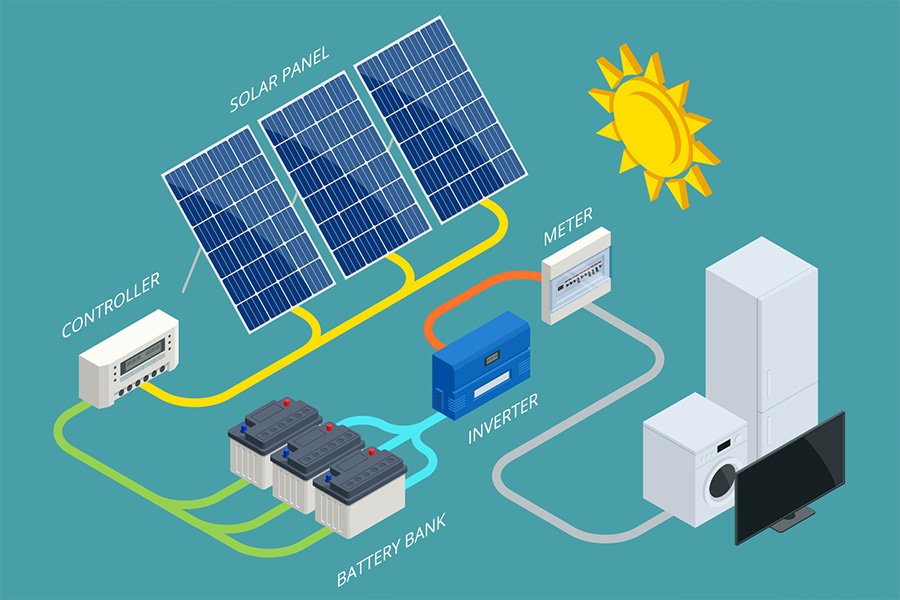Differences Between Photovoltaic Inverters and Energy Storage Inverters
As the applications of photovoltaic (PV) systems combined with energy storage become more widespread, the importance of PV inverters and energy storage inverters as key components in PV generation and storage systems is increasingly evident. While both belong to the inverter category, there are significant differences in their working principles, control strategies, and application scenarios.
Energy Storage Inverter
The energy storage converter, also known as a Power Conversion System (PCS), or bidirectional energy storage inverter, is a critical component that enables bidirectional energy flow between the energy storage system and the grid. Its primary function is to manage the charging and discharging process of the battery and to convert between alternating current (AC) and direct current (DC). In the absence of a grid, it can directly supply power to AC loads.
Photovoltaic Inverter
A photovoltaic inverter is specifically used in solar PV power generation. Its primary function is to convert the direct current (DC) produced by solar panels into alternating current (AC) that can be fed directly into the grid or used by loads.

Differences Between Photovoltaic Inverters and Energy Storage Inverters
1. Working Principles
Photovoltaic inverters come in various types, including centralized, string, and microinverters. Their main function is to convert the DC output from PV modules into AC power that meets the grid and load requirements, thus serving the power needs of residential and industrial users. They are a critical component in PV systems.
Energy storage inverters, also known as bidirectional energy storage inverters or storage converters, are the main energy conversion devices in energy storage systems. They handle bidirectional conversion between DC and AC, controlling the charging and discharging processes of batteries. They consist of DC/AC bidirectional converters and control units.
2. Control Strategies
Photovoltaic inverters primarily use a unidirectional control strategy to convert DC output from PV modules into AC. They typically operate during the day and their power output can be unstable due to weather conditions. Additionally, in PV systems equipped with anti-backflow functions, inverters can adjust their output power flexibly based on the system’s generation status to manage energy flow.
Energy storage inverters have a more complex energy control system, dealing with bidirectional conversion between DC and AC. They can supply power to the grid, like PV inverters, and also draw energy from the grid. They operate without strict time constraints, storing energy in batteries during low-demand periods and releasing stored energy during peak demand periods, thereby reducing grid pressure. They can also switch to off-grid mode to continue supplying power in case of grid failures, ensuring stable energy management.
3. Application Scenarios
Photovoltaic inverters are mainly used in balconies, residential, and commercial and industrial PV systems. Their primary role is to convert DC power generated by PV panels into AC power for use in electrical systems. Large-scale ground-mounted and centralized PV power plants also require PV inverters to convert the generated DC power into AC.
Energy storage inverters are widely used between energy storage systems and the grid. Common applications include commercial and industrial energy storage power stations and residential energy storage systems. They utilize batteries and other storage devices to manage charging and discharging, meeting the energy needs of various scenarios at different times, thus ensuring the stability and reliability of power supply.
Additionally, from a performance perspective, PV inverters typically focus on DC/AC conversion efficiency, power density, protective functions, and protection ratings. Energy storage inverters emphasize charging and discharging efficiency, grid/off-grid switching speed, and energy storage density.


